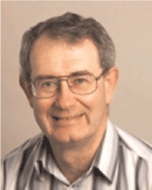Barrow Island enhanced oil recovery polymer pilot—part two: progress and way forward*
D. León A , J. Scott A , S. Saul A , L. Hartanto A , S. Gardner A , P. Costelloe A , E. Santoso A , W. Widjanarko A , P. Welton A and A. Fletcher BA Chevron Australia Pty Ltd.
B Parr Systems Pty Ltd.
The APPEA Journal 51(2) 672-672 https://doi.org/10.1071/AJ10052
Published: 2011
Abstract
After successful design and implementation phases that included both subsurface and facilities components, an EOR polymer injection pilot has been operational for two years in Australia's largest onshore oil field at Barrow Island (816 MMstb OOIP). The pilot's main objective was to identify a suitable EOR technology for the complex, highly heterogeneous, very fine-grained, bioturbated argillaceous sandstone—high in glauconite, high porosity (∼23%), low permeability (∼5 mD, with 50+ mD streaks)—reservoir that will ultimately increase the recovery of commercial resources past the estimated ultimate recovery factor with waterflooding (∼42%). This was achieved using the in-depth flow diversion (IFD) methodology to access new unswept oil zones—both vertically and horizontally—by inducing growth in the fracture network. During the pilot operating phase, the main focus has been on surveillance and monitoring activities to assess the effectiveness of the process, including:
injection pressure at the wellheads—indicating any increase in resistance to flow;
pressure fall off tests at the injectors—to determine fracture growth, if any;
sampling and lab analysis at the producers—to identify polymer breakthrough;
frequent production tests—quantifying reduction in water cut and oil production uplift; and,
pressure build up surveys at the producers.
These activities provided input data to the fit for purpose simulation model built in Reveal incorporating fractures and polymer as a fourth phase. With more than 96 % compliance to the surveillance plan, this paper will present the present findings and evaluation of the results, which may lead to the continuation of the pilot in other patterns of the reservoir and, possibly, to further expansion in the field.

As production engineer at Chevron Australia Pty Ltd, Daniel León has been involved in the EOR Windalia project since 2009, initially focusing on the surveillance and monitoring plan; after commissioning, he took the role of project manager. He joined Chevron in 2006 as a reservoir engineer for the Gorgon project and has been with the Barrow Island asset since 2008. |

John Scott, subsurface operations team leader, has been the project manager for the implementation of the Windalia EOR project since 2007. He headed up the multi-disciplinary team responsible for the reservoir surveillance and monitoring plans for the target wells and the installation and ongoing operation of the polymer injection equipment. He began his career in the oilfield with Schlumberger spending more than 23 years filling various roles across the cementing, well testing, wireline, completions and integrated project management product lines. He has worked in Australia, Angola, China, Indonesia, Malaysia, Singapore, the UK and Russia. He has been with Chevron since 2004 and holds qualifications in drilling engineering from Robert Gordon University, Aberdeen, UK. |

Steven Saul has been with WA Oil working as a development geologist since 2009 and has been involved in the EOR pilot since, providing Earth science support to the team, including provision of a geological model and guidance on geological inputs for simulation studies. Steven joined Chevron in 2009. He holds a BSc (geophysics) from Curtin University, Perth. |

Lina Hartanto has been the WA oil lead reservoir engineer since 2009 and is responsible for maximising and improving recoveries from Barrow Island reservoirs. Lina has more than 10 years of experience with various oil and gas companies, including: reservoir engineer at Woodside Energy Ltd and consultant at Roxar Pty Ltd in the areas of reservoir engineering and reservoir characterisation. She has a PhD and BEng (chemical) (Hons) from Curtin University, Perth. |

Shannon Gardner has been the WA Oil technical assistant since late 2009 and was involved in the EOR pilot since then, providing data quality control and monthly reporting for the team. Shannon joined Chevron in late 2009 and has been a technical assistant in the oil and gas industry for about four years. |

Paul Costelloe has been the WA Oil's senior facilities engineer since 2005 and is responsible for mechanical equipment packages on Barrow Island. He has more than 20 years of experience in oil and gas production, petrochemical industries and original equipment manufacturers with companies such as Saudi Aramco, SABICl, ExxonMobil, Shell, MK Kellogg, ABB Lummus and Sulzer, covering a range of project engineering roles for mechanical packages and rotating equipment. He studied mechanical engineering at Coventry University, UK and also served with the British Armed Forces. |

Erwin Santoso, reservoir engineer, has been involved in the EOR Windalia project since April 2010 and is responsible for building the reservoir simulation model using the software Petroleum Expert Reveal. He has eight years of experience working in the oil and gas industry, and now working through Lucid Consultants to provide technical services in the area of reservoir simulation modelling, well and network modelling. He has an MSc (petroleum engineering) and a BEng (chemical) (Hons) from Curtin University, Perth. |

Wisnu Widjanarko is the WA oil subsurface development team leader with Chevron Australia—he joined the organisation in 2008. He has 20 years of experience in the reservoir engineering disciplines that includes: reservoir simulation, development planning, reserves and mature assets development. He has previously worked for ARCO, BP and Woodside in various locations worldwide. Wisnu has a BSc (electrical engineering) from Gadjah Mada University, Indonesia. |

Paul Welton has been the WA Oil subsurface manager since 2007 and is responsible for maximising recoveries from Barrow Island reservoirs. He has more than 24 years of experience—in a range of petroleum engineering, production engineering, well engineering and operations roles—with national and international E&P companies, including: BP, Marathon, ADCO, BSP, Woodside, NAM, PDO and Occidental. He has a BSc (Hons) (petroleum engineering) from Imperial College, London. |

Alistair Fletcher is an EOR Advisor, Chevron Australia Pty. Ltd. Alistair Fletcher has been an advisor to the Windalia EOR project since 2006. He has focused on subsurface assessment, the laboratory and coreflood program, and design of the in-depth flow diversion (IFD) concept. He began his career with BP as a reservoir engineer, specialising in chemical EOR. He has also held positions with Curtin University, CSIRO Petroleum and the Petroleum Science and Technology Institute in the UK. |
References
Allard, D., Hillyer, M.G., West Australian Petroleum Pty Ltd., Gerbacia, W. E., Rychener, L.M., and Chevron Overseas Petroleum Technology Company, 1999—Empirical risk assessment of infill drilling locations, Barrow Island, Australia. SPE Annual Technical Conference and Exhibition, Houston, Texas, 3 – 6 October, SPE 56816.Dann, M., Burnett, D., and Hall, L., 1982—Polymer performance in low permeability reservoirs. SPE Oilfield and Geothermal Chemistry Symposium, Dallas, Texas, 25 – 27 January, SPE 10615.
Emanuel, Tang, R.W., Chevron Petroleum Technology Co., Mckay, D.M., Ellis, M.H., West Australian Petroleum Pty Ltd., 1993—A hybrid simulation study of the Windalia sand waterflood. SPE Annual Technical Conference and Exhibition, Houston, Texas, 3 – 6 October, SPE 26477.
Fletcher, A.J.P., and Morrison, G., 2008—Developing a chemical EOR pilot strategy for a complex, low permeability water flood. SPE Improved Oil Recovery Symposium, Tulsa, OK, USA, 19 – 23 April, SPE 112793.
Fletcher, A.J.P., Lamb, S.P., and Clifford, P.J. (1992). Formation damage from polymer solutions: factors governing injectivity. SPE Reservoir Engineering 7, 237–46.
Hatcher, G.B., Csiro Division of Petroleum Resources., Chen, H., Rahman, S.S., University of New South Wales., Hogg, P.F., and West Australian Petroleum Pty Ltd., 1996—Evaluating formation damage risks in a Glauconitic sandstone reservoir: a case history from the offshore North West Shelf of Australia. SPE Asia Pacific Oil and Gas Conference, Adelaide, Australia, 28 – 31 October, SPE 37014.
Martin, F.D., and Calgon Corp., 1974—Laboratory Investigations in the use of polymers in low permeability reservoirs. Fall Meeting of the Society of Petroleum Engineers of AIME, Houston, Texas, 6 – 9 October, SPE5100.
Petroleum Experts, 2009—IPM 7.0 User Manual. Edinburgh, U.K: Petroleum Experts.
Treiber, L.E., Amoco Production Co., Yang, S.H., and Exxon Production Research Co., 1986—The nature of polymer plugging and a wellbore treatment to minimize it. SPE Enhanced Oil Recovery Symposium, Tulsa, USA, SPE 14948.
Widjanarko, W., Welston, P., Leon Echeverria, D., Scott, J., Fletcher, A., and Costelloe, P., 2010—The design and application of a polymer EOR trial on Barrow Island. APPEA Conference, Brisbane, Queensland, 16 – 19 May.
Williams, C.T. (1977). An analysis of the production performance of the Windalia Sand reservoir of the Barrow Island Oil Field. APEA Journal 17, 105–13.


